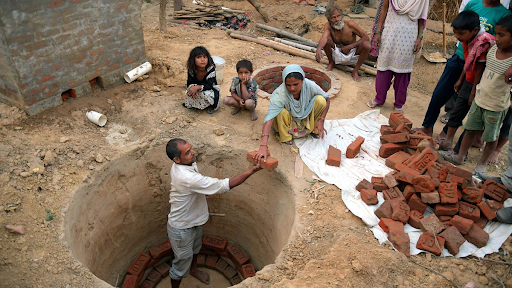



On World Health Day, India celebrates progress in sanitation and clean water through Swachh Bharat and Jal Jeevan Missions. Over 80% rural homes have tap water, 96% villages are ODF Plus. Women lead change. Challenges remain, but India sets a global example in health, dignity, and environmental protection.

Copyright infringement not intended
Picture Courtesy: THE HINDU
On World Health Day (April 7), India celebrates how much progress it has made.
On World Health Day (April 7), India is celebrating how much progress it has made in health and sanitation. These two things—health and sanitation—are not separate but work together to keep people healthy.
The Swachh Bharat Mission (SBM) and the Jal Jeevan Mission (JJM) , have made a huge difference in rural India.
India has made huge progress in providing clean water and toilets. These efforts aim to ensure dignity, health, and make life better for everyone. They’re about changing how people live and think.
Sanitation and clean water are the first steps to staying healthy. They protect people from diseases, help children grow stronger, and give women more freedom.
Over 80% of rural households in India have tap water connections , and 96% of villages are ODF Plus meaning they manage waste well too.
Waste management systems now exist in over 5 lakh villages, keeping both solid and liquid waste under control.
Women play a big role in this success. Over 2.48 million women have been trained to test water quality, and many lead groups that manage sanitation projects, recycling centers, and even produce sanitary napkins. These women are leaders in their communities, showing others how to stay clean and healthy.
To resolve these issues, the government works with different ministries—like health, education, and rural development—to ensure that everyone benefits from clean water and sanitation.
Work on sanitation and water doesn’t just help Indians—it sets an example for other countries, especially developing nations.
Innovations like real-time dashboards to track progress, biogas plants that turn waste into energy, and plastic waste management units are ideas other countries can copy.
Every rupee spent on water, sanitation, and hygiene (WASH) brings huge returns. It improves health, boosts productivity, promotes gender equality, and protects the environment.
Good health starts at home, not in hospitals. When people have access to clean water, safe toilets, and proper waste management, they live healthier, happier lives. India’s journey demonstrates that small changes—like building a toilet or installing a tap—can produce great results. As India moves forward, it continues to share its lessons with the world, to work toward a cleaner, healthier planet.
Must Read Articles:
10 YEARS OF SWACHH BHARAT MISSION
SIGNIFICANCE OF JAL JEEVAN MISSION
Source:
|
PRACTICE QUESTION Q. “Strengthening primary healthcare infrastructure is crucial for building a healthy India”. Critically analyze. 150 words |









© 2025 iasgyan. All right reserved